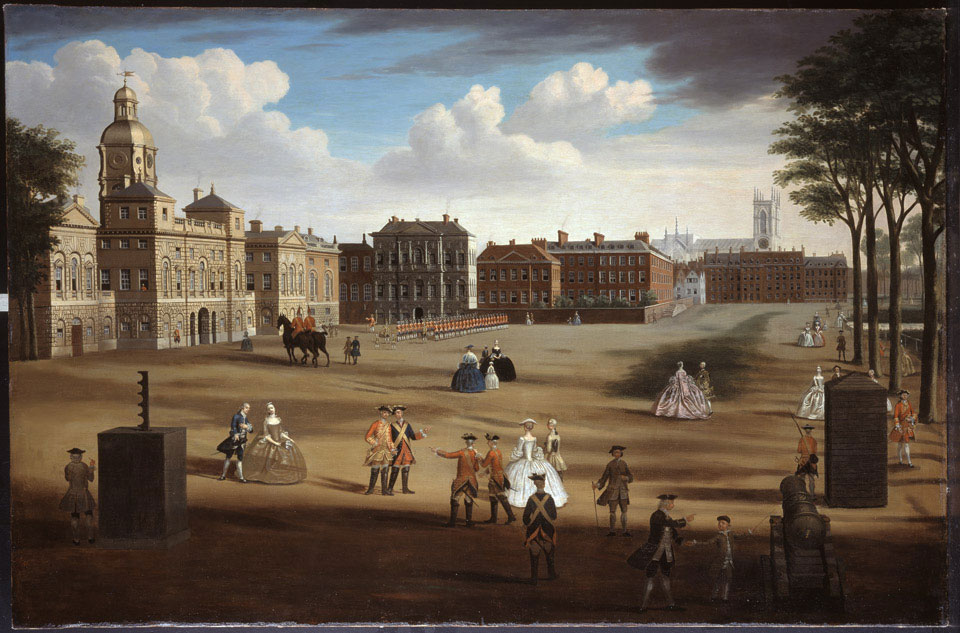
Online Collection
« Prev - 1 of 1 results - Next »
A View of the west front Horse Guards, with the Treasury and Downing Street beyond, 1758 (c)
Oil on canvas, attributed to Samuel Wale (1721-1886), 1758 (c).
The curiously-named building, Horse Guards, was so called after the mounted troops who have formed the sovereign's Life Guard on this spot since the Restoration of King Charles II in 1660. It grew from a simple building that housed troops on duty as escorts to the King to become the headquarters of the British Army in the eighteenth and nineteenth centuries. The Georgian War Office, a small organisation with a staff of a dozen or so clerks, was also housed in the building. However, much of the detailed day-to-day administration of the army was handled at regimental level. Before 1841, the only access to the royal residences of St James's Palace and Buckingham Palace was through the archway of Horse Guards. It remains the official entrance to the two palaces, for which reason The Queen's Life Guard is still mounted here.
The 'new' Horse Guards building, seen here, was designed in the Palladian style by the famous architect, William Kent (1685-1748) and constructed between 1750 and 1756. Visible in the background are the Treasury Building, also designed by Kent and completed in 1736, the rear of Downing Street, and the towers of Westminster Abbey.
In the foreground of the scene are various officers of 1st Troop of Horse Guards with one of Royal Horse Guards. A soldier of Foot Guards stands on sentry duty while, at the far end of the parade ground, two rows of a Foot Guards regiment are drawn up. The artist, Wale, was Professor of Perspective at the Royal Academy, a fact that may have a bearing on the oversized scale of the two mounted Horse Grenadier Guards to centre left. The 'box' at front left is a water sluice, operated by a ratchet (rack and pinion) system controlling an underground stream.
NAM Accession Number
NAM. 1993-11-43-1
Copyright/Ownership
National Army Museum, Out of Copyright
Location
National Army Museum, Army At Home gallery
Object URL
https://collection.nam.ac.uk/detail.php?acc=1993-11-43-1

